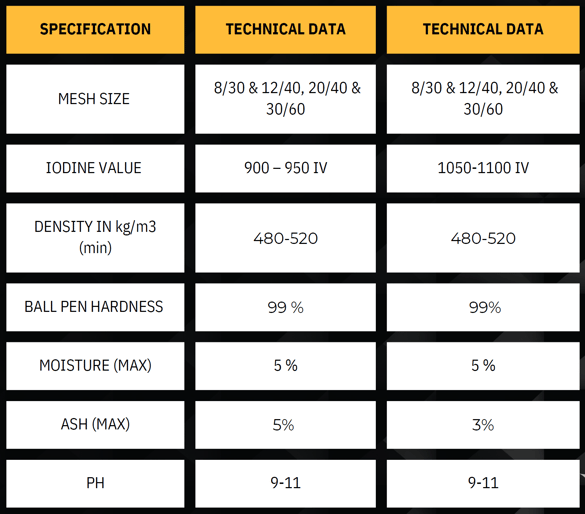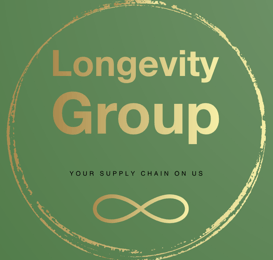
Coconut Based Activated Carbon


We manufacture and export multiple varieties of coconut based activated carbon used in various industries
International quality standards
Supplying worldwide
Like its name, coconut based activated carbon comes from the coconut shell. Activated carbon is produced from coconut shells in a two-step process. The first step in activation is to carbonize the shells to drive about two-thirds of the volatiles out of the shells, creating a carbonaceous mass full of tiny pores. In the second stage, this carbonized base material is activated at high temperature (1,100°C/2,012 °F) in steam. Activation temperature and the amount of activation time are important to create the internal pore networks and to impart certain surface chemistries (functional group) inside each particle. In essence, the total activation process gives carbon its unique adsorption characteristics.
Coconut shell activated carbons are very popular in the gas phase purification and potable water purification industries. Coconut shell-based activated carbons are the least dusty.
Coconut shell-based carbon has the highest hardness compared to other types of activated carbons, which makes it the ideal carbon for water purification. In terms of base materials, coconut shell and wood are renewable resources. Coconut plantations with millions of acres of land continue to provide all the benefits of green trees to our environment in spite of using billions of waste coconut shells per year for activated carbon production.
Certificate of Analysis


Packaging:
50kg net in poly woven bags or 25kg net in PP bags with inner lining shrink wrapped.
Bags palletized into fumigated pellets as per ISPM 15 standard.
Storage:
Store the material in a cool and dry area, away from sunlight.
Labeling:
The label displays the product name, lot number, net weight, gross weight, manufacturer name & address and other information or marks as required by the customer.
Handling:
Handle carefully to minimize attrition. Provide adequate ventilation and avoid contact with eyes and skin.
Certificate of Analysis (COA) and MSDS will be provided along with the consignment.

Coconut Based Activated Carbon


We manufacture and export multiple varieties of coconut based activated carbon used in various industries
International quality standards
Supplying worldwide
Like its name, coconut based activated carbon comes from the coconut shell. Activated carbon is produced from coconut shells in a two-step process. The first step in activation is to carbonize the shells to drive about two-thirds of the volatiles out of the shells, creating a carbonaceous mass full of tiny pores. In the second stage, this carbonized base material is activated at high temperature (1,100°C/2,012 °F) in steam. Activation temperature and the amount of activation time are important to create the internal pore networks and to impart certain surface chemistries (functional group) inside each particle. In essence, the total activation process gives carbon its unique adsorption characteristics.
Coconut shell activated carbons are very popular in the gas phase purification and potable water purification industries. Coconut shell-based activated carbons are the least dusty.
Coconut shell-based carbon has the highest hardness compared to other types of activated carbons, which makes it the ideal carbon for water purification. In terms of base materials, coconut shell and wood are renewable resources. Coconut plantations with millions of acres of land continue to provide all the benefits of green trees to our environment in spite of using billions of waste coconut shells per year for activated carbon production.
Certificate of Analysis


Packaging:
50kg net in poly woven bags or 25kg net in PP bags with inner lining shrink wrapped.
Bags palletized into fumigated pellets as per ISPM 15 standard.
Storage:
Store the material in a cool and dry area, away from sunlight.
Labeling:
The label displays the product name, lot number, net weight, gross weight, manufacturer name & address and other information or marks as required by the customer.
Handling:
Handle carefully to minimize attrition. Provide adequate ventilation and avoid contact with eyes and skin.
Certificate of Analysis (COA) and MSDS will be provided along with the consignment.
Follow


© 2024 Longevity Group. All rights reserved
Certificates
